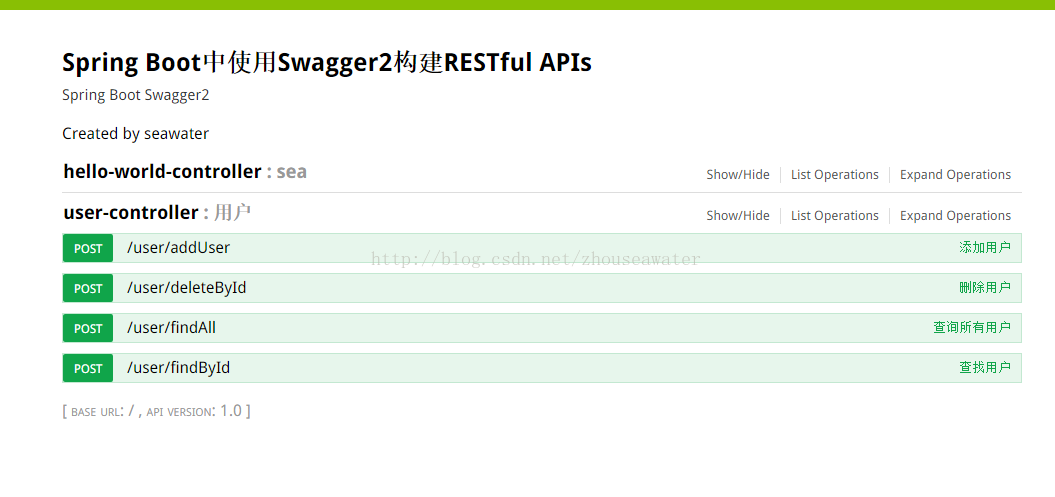
This article mainly introduces Spring Boot to add MySQL database and JPA. The editor thinks it is quite good, so I will share it with you now and give it as a reference. Let’s follow the editor and take a look
Recently I am learning Spring Boot and continue the previous learning. This time we add MySQL database and JPA.
Configuration:
pom.xmlFile
<!-- 添加Mysql和JPA--> <dependency> <groupId>org.springframework.boot</groupId> <artifactId>spring-boot-starter-data-jpa</artifactId> </dependency> <dependency> <groupId>mysql</groupId> <artifactId>mysql-connector-java</artifactId> </dependency>
Add data in the Application.properties (create a new file under the resource folder and configure it) Configure:
spring.datasource.url = jdbc:mysql://localhost:3306/spring_boot spring.datasource.username = root spring.datasource.password = root spring.datasource.driverClassName = com.mysql.jdbc.Driver # Specify the DBMS spring.jpa.database = MYSQL # Show or not log for each sql query spring.jpa.show-sql = true # Hibernate ddl auto (create, create-drop, update) spring.jpa.hibernate.ddl-auto = update # Naming strategy spring.jpa.hibernate.naming-strategy = org.hibernate.cfg.ImprovedNamingStrategy # stripped before adding them to the entity manager) spring.jpa.properties.hibernate.dialect = org.hibernate.dialect.MySQL5Dialect
User class
package com.seawater.bean;
import javax.persistence.*;
import javax.validation.constraints.NotNull;
/**
* Created by zhouhs on 2016/12/30.
*/
@Entity
@Table(name = "user")
public class User {
@Id
@GeneratedValue(strategy = GenerationType.AUTO)
private Long id;
private String name;
private int age;
public Long getId() {
return id;
}
public void setId(Long id) {
this.id = id;
}
public String getName() {
return name;
}
public void setName(String name) {
this.name = name;
}
public int getAge() {
return age;
}
public void setAge(int age) {
this.age = age;
}
}UserController
package com.seawater.controller;
import com.seawater.Dao.UserDao;
import com.seawater.bean.User;
import io.swagger.annotations.Api;
import io.swagger.annotations.ApiImplicitParam;
import io.swagger.annotations.ApiImplicitParams;
import io.swagger.annotations.ApiOperation;
import org.springframework.web.bind.annotation.RequestMapping;
import org.springframework.web.bind.annotation.RequestMethod;
import org.springframework.web.bind.annotation.RequestParam;
import org.springframework.web.bind.annotation.RestController;
import javax.annotation.Resource;
/**
* Created by zhouhs on 2016/12/30.
*/
@RestController
@RequestMapping(value = "/user")
@Api(description = "用户")
public class UserController {
@Resource
UserDao userDAO;
@ApiOperation(value = "添加用户")
@ApiImplicitParams({
@ApiImplicitParam(name = "name" , value = "name" , paramType = "query" , required = true ),
@ApiImplicitParam(name = "age" , value = "age" , paramType = "query" , required = true )
})
@RequestMapping(value = "/addUser" , method = RequestMethod.POST)
public String addUser(@RequestParam(value = "name") String name,@RequestParam(value = "age") int age){
User user = new User();
user.setName(name);
user.setAge(age);
userDAO.save(user);
return "add user success !";
}
@ApiOperation(value = "查找用户")
@ApiImplicitParam(name = "id" , value = "id" , paramType = "query" , required = true , dataType = "int")
@RequestMapping(value = "/findById" , method = RequestMethod.POST)
public String findById(@RequestParam(value = "id") Long id){
User user = userDAO.findById(id);
if(user == null){
return "error";
}else{
return "name:" + user.getName() + " , age:" + user.getAge();
}
}
@ApiOperation(value = "查询所有用户")
@RequestMapping(value = "/findAll" , method = RequestMethod.POST)
public Iterable findAll(){
Iterable<User> userList = userDAO.findAll();
return userList;
}
@ApiOperation(value = "删除用户")
@ApiImplicitParam(name = "id" , value = "id" , paramType = "query" , required = true , dataType = "int")
@RequestMapping(value = "/deleteById" , method = RequestMethod.POST)
public String deleteById(@RequestParam(value = "id") Long id){
userDAO.delete(id);
return "delete success !";
}
}Data table (id is defined as Integer):

UserDao:
package com.seawater.Dao;
import com.seawater.bean.User;
import org.springframework.data.repository.CrudRepository;
/**
* Created by zhouhs on 2016/12/30.
*/
public interface UserDao extends CrudRepository<User, Long> {
public User findById(Long id);
}ThenStart the project: Visit localhost:8081/swagger-ui.html
Result:

I won’t do it one by one.
The above is the detailed content of Sample code sharing for adding MySQL database and JPA instance to Spring Boot. For more information, please follow other related articles on the PHP Chinese website!




